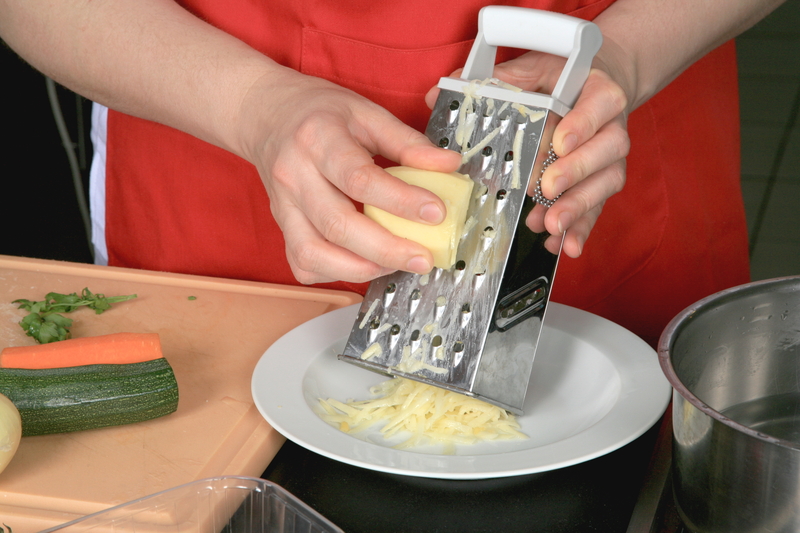Curtain Cleaning 101: A Step-by-Step Approach
Posted on 08/06/2025
Curtain Cleaning 101: A Step-by-Step Approach
Curtains add a touch of elegance, warmth, and character to any room. However, over time, dust, pet dander, allergens, and stains can accumulate, dulling their beauty and even affecting indoor air quality. Proper curtain cleaning is essential not only for aesthetics but also for maintaining a healthier living space. In this comprehensive guide, you'll learn everything you need to know about curtain cleaning methods, maintenance tips, and effective step-by-step techniques for every type of curtain fabric.

Why Regular Curtain Cleaning Is Essential
Before diving into the step-by-step curtain cleaning approach, it's important to understand why keeping your curtains clean matters. Curtains are essentially filters, trapping dust, pollen, odors, and other airborne particles that otherwise circulate in your home. Ignoring curtain maintenance can lead to:
- Allergen buildup, aggravating allergies and asthma
- Fading and deterioration of fabric
- Musty smells and odors lingering in your rooms
- Shortened lifespan of the curtains
Regular curtain cleaning not only refreshes the appearance of your draperies but also fosters a cleaner, healthier environment.
Understanding Your Curtain Type
Before you begin cleaning, identify the fabric and style of your curtains. This will determine the safest and most effective way to proceed. Common curtain materials include:
- Heavy drapes (e.g., velvet, brocade)
- Sheer and lightweight curtains (e.g., voile, lace, chiffon)
- Cotton and polyester blends
- Blackout and thermal curtains
- Printed and delicate fabrics
Always check the manufacturer's label for specific washing instructions before proceeding. The wrong technique can cause color fading, shrinkage, or permanent fabric damage.
Tools & Supplies Needed for Curtain Cleaning
Equipping yourself with the right tools ensures the cleaning process goes smoothly. Here's what you may need:
- Vacuum cleaner with upholstery attachment
- Soft-bristled brush or lint roller
- Mild detergent (preferably gentle or fabric-specific)
- Sponge and clean towels
- Bucket or large basin
- Steamer or iron (for wrinkle removal)
- Clothesline or drying rack
- Washing machine (optional, for suitable fabrics)
Step-by-Step Curtain Cleaning Instructions
1. Remove Curtains from the Rod
Carefully take down your curtains and remove any hooks, rings, or accessories. This step makes it easier to clean every inch of fabric and avoids accidental damage. If your curtains are especially large, fold them neatly to prevent tangling.
2. Shake Out & Vacuum the Curtains
Take the curtains outdoors and give them a good shake to dislodge loose dust, dirt, and debris. Next, use a vacuum cleaner fitted with an upholstery attachment to go over both sides of the curtain. Pay special attention to the top folds and hems, as these collect the most dust.
- For delicate curtains, set the vacuum to a gentle mode or use a lint roller instead.
- Weekly vacuuming helps extend the time needed between deep cleanings.
3. Spot Treat Any Stains
Inspect the entire curtain for stains before moving to a full wash. Apply a small amount of mild detergent or a fabric-specific stain remover to visible spots. Gently blot (do not rub!) with a clean, damp cloth.
- *Tip: Always test the stain remover on an inconspicuous spot first to ensure it won't discolor the fabric.
- Common stains include food, drink, or pet marks. The sooner you treat these, the easier they are to remove.
4. Choose the Best Curtain Washing Method
Your curtain's fabric type will dictate the most appropriate cleaning technique. Here's a breakdown of popular curtain cleaning methods:
- Machine Wash: Many cotton, linen, or polyester curtains are machine washable. Use a gentle cycle and cold water. Wash alone or with similar fabrics to avoid tangling and color transfer.
- Hand Wash: Lace, sheer, or delicate curtains do better with gentle hand washing. Use a mild detergent in cool water. Swish gently and avoid wringing the fabric, which can stretch or tear it.
- Dry Clean Only: Velvet, silk, brocade, and many blackout curtains require professional dry cleaning. If the label says "dry clean only," never risk water washing as it can ruin the material or lining.
- Steam Cleaning: Some curtains tolerate steam cleaning. Using a garment steamer, move slowly down the length of the hanging curtain, holding the steamer several inches away to prevent over-wetting.
Always refer to the care label for best results. If in doubt, opt for professional cleaning, especially for antique or elaborate draperies.
5. Rinse and Remove Excess Water
If washed by hand, rinse thoroughly in cool water until all soap is gone. Gently squeeze (do not twist or wring) excess water from the fabric. For machine-washed curtains, opt for an extra rinse cycle and a low spin to avoid fabric stretching.
6. Dry Curtains Properly
- Air Drying: The safest method for most curtains. Hang them on a sturdy clothesline or over a drying rack, spreading the fabric to avoid overlapping and trapping moisture.
- Machine Drying: Only tumble dry if the label indicates it's safe. Use a low heat or delicate setting, and remove curtains promptly to prevent wrinkles.
- Avoid direct sunlight: as it may fade colors of sensitive fabrics.
Tip: Hang curtains back on the rod while slightly damp--creases will naturally fall out, and curtains will dry without prominent wrinkles.
7. Iron or Steam Out Wrinkles
Some curtain fabrics will need gentle ironing. Use the manufacturer's temperature recommendation and iron on the reverse side. Delicate or synthetic curtains can be steamed while hanging, which is often safer and easier.
8. Rehang Your Curtains
Once fully dry and wrinkle-free, reattach hooks, rings, or heading tape, then rehang your curtains. Admire the fresh, vibrant look of your window treatments!
Special Curtain Cleaning Considerations
How to Clean Blackout and Thermal Curtains
Blackout and thermal curtains often contain special insulating layers or coatings. Never use hot water or harsh chemicals, which can degrade these properties. Typically, gentle vacuuming and spot cleaning are preferred. If the care label allows, wash on a cool, gentle cycle and avoid wringing.
Sheer and Lace Curtain Cleaning
Sheer and lace curtains are especially fragile. Hand wash with mild detergent, rinse thoroughly, and lay flat on towels to dry. Hanging wet can lead to sagging or distortion of their delicate weave.
Velvet and Heavy Drapery Recommendations
Thick, heavy drapes like velvet require professional cleaning to avoid watermarks and fabric crushing. Regular vacuuming keeps dust at bay and lengthens intervals between comprehensive cleanings.
DIY Curtain Freshening Between Washes
- Weekly vacuuming removes surface dust and keeps curtains looking their best.
- Use a lint roller for pet hair, especially on dark fabrics.
- Spot clean minor marks with a damp cloth as soon as they occur.
- Deodorize by lightly spritzing with fabric-safe freshener or a homemade mix of water and a few drops of essential oil.
These simple measures will help maintain a fresh, airy feel in your home and reduce how often deep cleaning is necessary.
Best Practices for Long-Term Curtain Care
- Avoid smoking indoors or using strong-scented candles near your curtains, as fabrics absorb odors easily.
- Open your windows regularly to let fresh air circulate through the fabrics.
- Rotate curtains (if you have more than one set) for even wear and sun exposure.
- If you store curtains seasonally, clean and dry thoroughly before packing to prevent mold and mildew.
FAQs on Curtain Cleaning
1. How often should you clean your curtains?
Lightweight or kitchen curtains may need a monthly wash, while heavier drapes and lined curtains usually require cleaning every 6-12 months. However, vacuum and spot clean regularly to keep dust at a minimum.
2. Can you put curtains in the dryer?
Always check the care label. Most delicate fabrics, lace, and blackout curtains should not be machine dried. Dry on a clothesline or flat whenever possible.
3. Is professional curtain cleaning necessary?
For delicate, antique, blackout, or heavily soiled curtains, professional cleaning is recommended. This preserves fabric quality and ensures coatings aren't damaged.

Summary: Bring New Life to Your Drapes
Curtain cleaning may seem intimidating, but with the right approach, it's both manageable and incredibly rewarding. Freshly cleaned curtains brighten your home, boost air quality, and enhance overall decor. To recap the curtain cleaning process:
- Identify curtain type and read care labels
- Remove, shake out, and vacuum curtains
- Spot clean stains and wash according to fabric recommendations
- Dry and press for a flawless finish
- Implement regular maintenance for continued freshness
By following this step-by-step curtain cleaning guide, your curtains will reward you with many more years of beauty and service--making your living space cleaner, brighter, and more inviting than ever before.
Ready to Start Your Curtain Cleaning Journey?
Make curtain care a part of your regular routine, and enjoy the difference clean, vibrant curtains bring to your home. For more expert tips and home cleaning guides, stay tuned to our blog!




